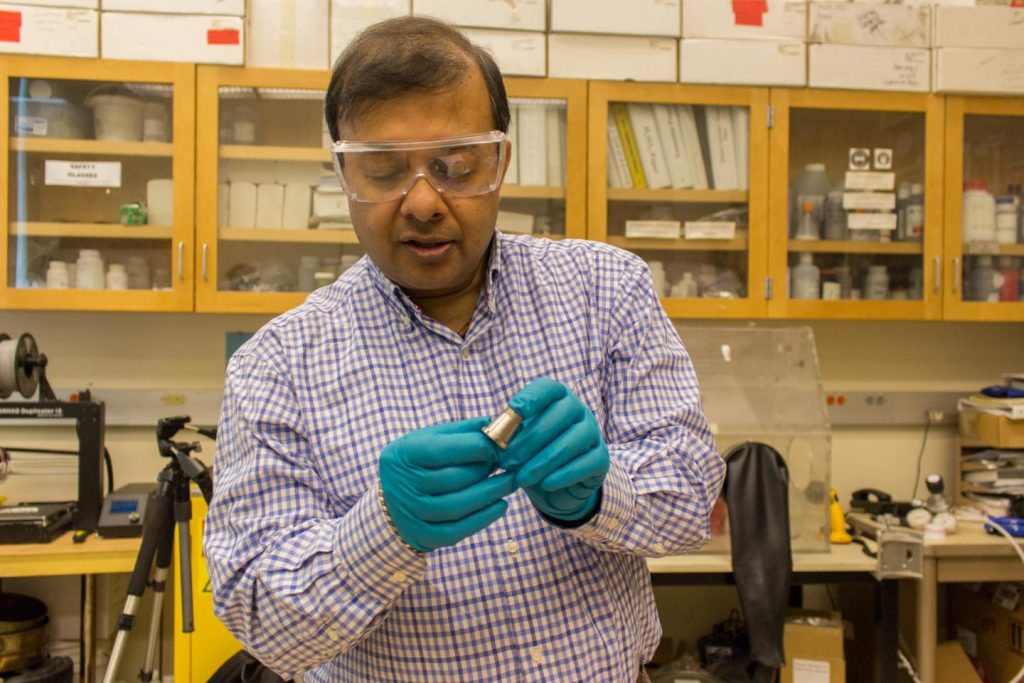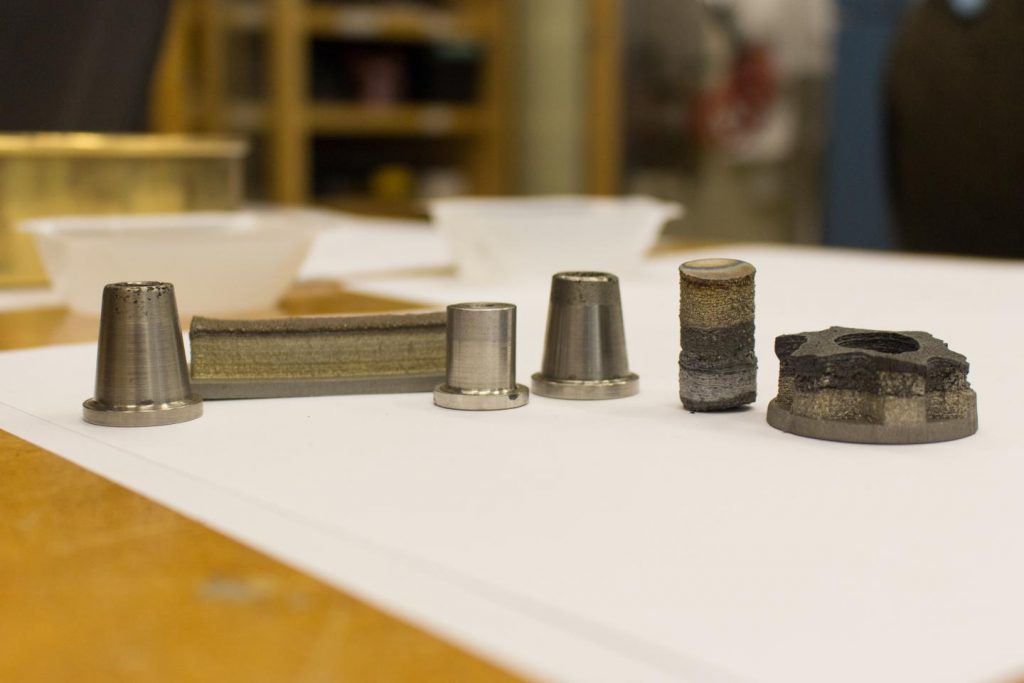A team of researchers at Washington State University have recently published results of a multimaterial metal 3D printing project. Using Optomec Laser Engineered Net Shaping (LENS) technology, the team has succeed in 3D printing components made from two different alloys in a single process.
Amit Bandyopadhyay, WSU Professor in the School of Mechanical and Materials Engineering, calls the findings:
“a step towards the next level of manufacturing and the next generation of design, validation, optimization and manufacturing using 3D printing.”

Multimaterial 3D printing challenges
In the WSU study, researchers sought to improve the thermophysical properties of Inconel 718, an aerospace-grade supper alloy, making it more suited to 3D printing, and to improve applications.
Highly resistant to temperatures, Inconel 718 melts at 1,336°C (2437°F) and is slow to cool. To improve the cooling rate, the WSU team proposed to deposit copper onto Inconel 718.
With different melting points (copper melts at 1,085°C) and properties 3D printing both alloys proved to be incredibly challenging, taking many considerations into account. To name one: due to copper’s natural luster, the team were working on an understanding “that more than 95% of the energy of the laser beam is reflected, limiting the amount of heat contributing to melting of the material.”
The weakest link
After an initial attempt failed, the team discovered the right parameters and successfully 3D printed Inconel 718/copper components that cooled 250% faster than those made in Inconel alone.

To make these parts traditionally would have required welding multiple pieces together. The success of the project means that high-performance parts made from Inconel 718 and copper are afforded a longer, less fuel-heavy, life.
Professor Bandyopadhyay concludes, “[Multimaterial additive manufacturing] allows us to vary the composition and add functionality to a product during 3D printing that is traditionally very difficult to achieve, and we can do this in a single process with a single machine.”
Results of the project, “Additive manufacturing of Inconel 718—Copper alloy bimetallic structure using laser engineered net shaping (LENS™)“, are published online in Additive Manufacturing journal. The study is co-authored by Bonny Onuike, Bryan Heer and Amit Bandyopadhyay.
For more cutting edge materials research subscribe to the 3D Printing Industry newsletter, follow us on Twitter and like us on Facebook.
Sign up to 3D Printing Jobs to post and find new opportunities near you.
Featured image shows A thimble of 3D printed Inconel 718 and copper. Photo via WSU.



